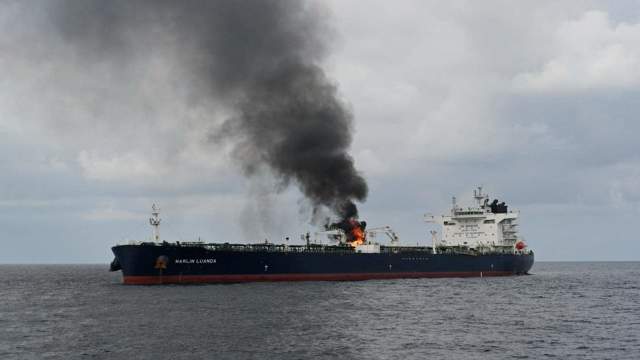It is the first time in many years that Americans have faced such an opponent, experts say
The United States will not be able to prevent missile attacks from the Houthis in the Red Sea for a long time — they have no experience fighting an enemy with a serious arsenal of anti-ship missiles, experts believe. In order to secure trade routes and their warships, the Americans must significantly increase their grouping, suppress the Houthi air defenses, and detect and destroy launchers, which are often located in mountainous areas. All this is not a matter of one month. Meanwhile, Ansar Allah Defense Minister Mohamed al-Atifi said on January 30 that the movement was ready for a long-term confrontation with the United States and Great Britain.
Four types of threats
The Yemeni Houthis are ready for a long—term confrontation "with the forces of tyranny" — the United States and Britain - in the Red Sea, said on January 30, Defense Minister of the Ansar Allah movement Mohamed al-Atifi. This speech followed two high-profile attacks.
On January 29, the Houthis launched a missile at the U.S. Navy ship Lewis B. Puller in the Gulf of Aden — it provides logistical support to American forces striking Yemen. And on January 26, Ansar Allah acknowledged the attack on the British-owned oil tanker Marlin Luanda. A direct hit was recorded.
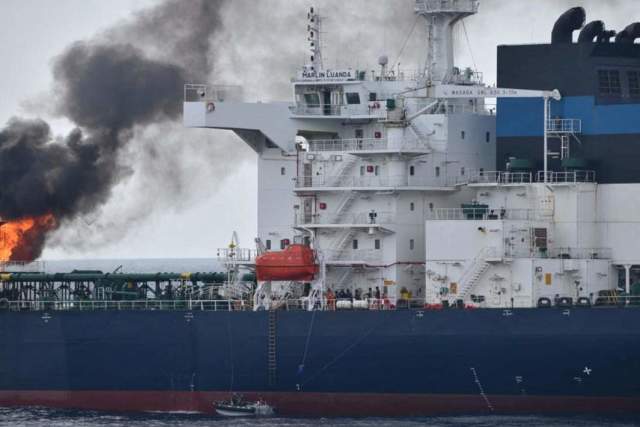
Marlin Luanda Oil Tanker
Image source: Photo: REUTERS
This was a kind of response to the actions of the American and British armed forces, which, starting on January 12, launched a series of attacks on Houthi targets in Yemen. It was declared that the purpose of the strike was to ensure the safety of navigation in the Gulf of Aden, but it is already obvious that they have not been achieved. Despite their technological superiority, the Americans will not be able to guarantee the safety of their warships and civilian vessels in this region, experts believe.
There are four threats from the Houthis in the Red Sea: flying drones, naval drones, cruise and ballistic anti-ship missiles. To repel them, the US Navy has, first of all, destroyers of the Arleigh Burke type, which perform convoy functions. They also have aircraft, portable air defense systems and other firepower that they can deploy on auxiliary ships.
— The basis of the US military force in the region is the Arleigh Burke destroyers. They are equipped with the Aegis air defense system, which is considered very advanced, " Dmitry Kornev, editor of the Militaryrussia portal, explained to Izvestia. — But shooting at small drones with such means, firstly, is expensive, and secondly, the missile may not hit the drone due to its size.
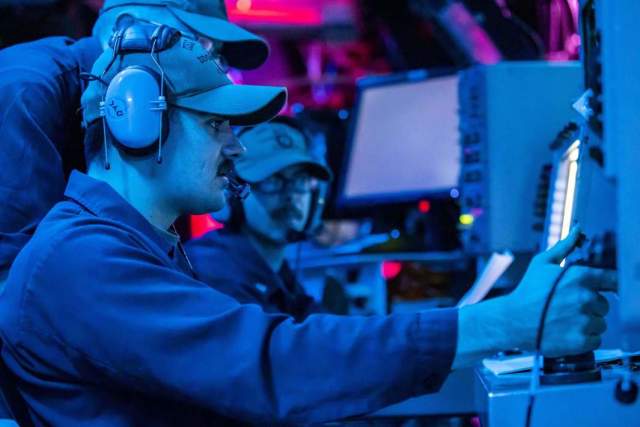
Photo: Global Look Press/MC2 Sawyer Connally
Image source: iz.ru
It is much more effective to use naval artillery to defeat small drones, the expert explained. But it has a short range, which means that it cannot cover significant areas.
American cruise missiles can shoot down quite effectively, but with ballistic missiles with an infrared homing head, everything is much more complicated. Despite the fact that they were used in the latest attacks on the ships, Dmitry Kornev noted.
— In order for Aegis to shoot down such a missile, it is necessary, firstly, that it be in range, and secondly, it must be tracked, — the expert explained. "And if she's maneuvering, it's even harder to hit her." Most likely, these missiles simply pass unnoticed. This is due to the fact that there are not enough American ships there.
Find and destroy
The second way to counter Houthi attacks is to detect the launchers and destroy them. American destroyers have Tomahawk cruise missiles, effective for solving the latter task. But to see the targets, you either need to have aviation in the air all the time, or somehow control the entire territory of the Houthis.
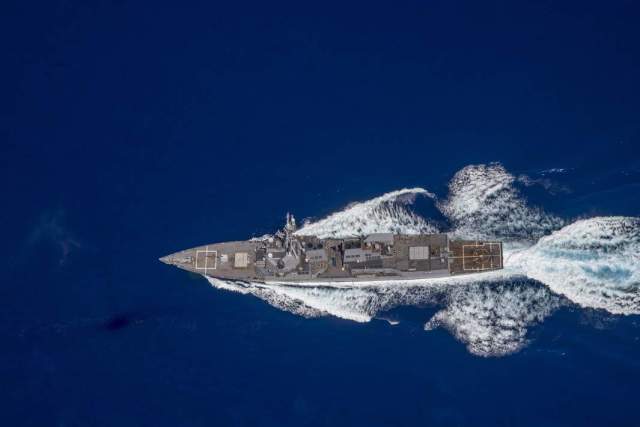
The destroyer Arleigh Burke
Image source: Photo: Global Look Press/Samuel Osborn
— The United States is trying to strike with F/A-18 fighters, plus the British have an MRFA Typhoon and bases in Cyprus, from where their planes take off, — explained military expert Yuri Lyamin. — Strikes on Yemen are also carried out from destroyers with Tomahawk missiles. In other words, there is a fairly serious naval and aviation group there. It intercepts some of the missiles and strikes certain strikes, but this is absolutely not enough to completely stop the attacks from the Houthis.
The Ansar Allah movement has an impressive arsenal. In particular, Soviet-designed anti-ship missiles such as the P-15M Termite with a range of up to 80 km, as well as their Chinese counterparts C-801. Of the more modern systems in their stocks, the Iranian Ghader and Ghadir with a range of 200 kilometers or more.
Even more dangerous for American ships are the homing ballistic Asef and Tankil with a range of up to 450-500 km. The Houthis are also armed with long-range cruise missiles based on Iranian developments.
— They have a fairly large territory from which they can strike, and the range of missiles is decent, — said Yuri Lyamin. — The United States uses its huge capabilities, in particular satellite reconnaissance, but they cannot identify all missile launchers and storage sites. Moreover, the Houthi-controlled part of Yemen is not only the most densely populated, there are mountains there. They are not high, but tunnels have been dug in them.
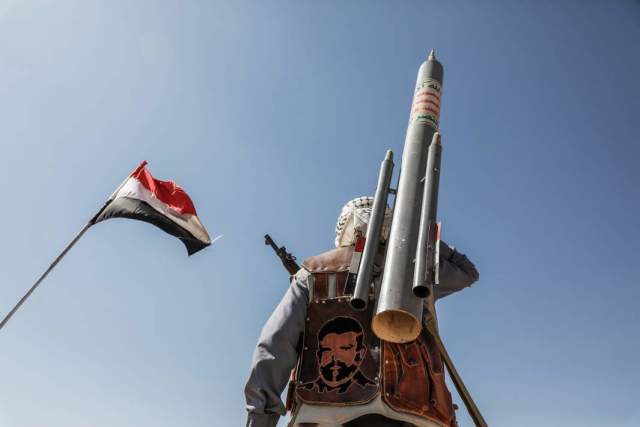
Photo: Global Look Press/Osamah Yahya
Image source: iz.ru
Under certain conditions, in particular, if there are enough aircraft and Arleigh Burke destroyers, the Americans can try to build a defense. But it will still be punched in places, experts say.
— It seems that the Americans cannot control the entire territory of the Houthis, — Dmitry Kornev believes. — A certain percentage of missiles will still pass through such a shield. And the Americans have only one way to deal with this — the build-up of forces, that is, escalation.
Experience, the son of difficult mistakes
One of the factors that does not play in favor of the Americans and their allies, experts call their lack of practical experience in countering an enemy with such an arsenal of anti-ship missiles. In recent decades, they have encountered their use except during the Iraq war, but this is incomparable with the current intensity.
— The Americans will gain experience in the operation against the Houthis. Including for this reason, it will not stop in the near future, — predicts Dmitry Kornev. — The US military will analyze the information, change tactics, try different ways of targeting. Perhaps they will bring large drones, of which they have a lot. They are not using them now because the Houthis have a serious air defense system. As soon as they suppress it, they will begin to gradually control the territory with the help of high-altitude attack drones. The probability of such a development is high.
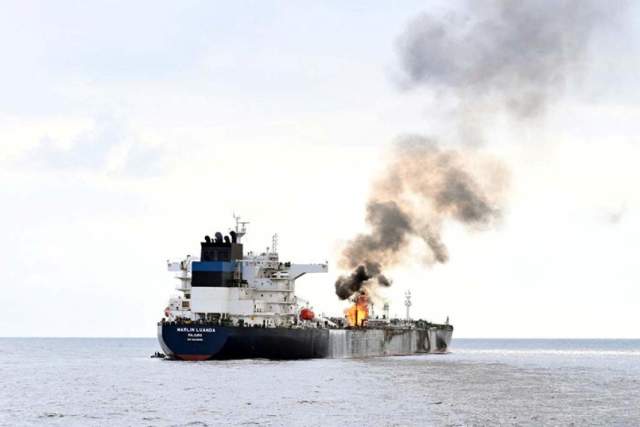
Marlin Luanda Oil Tanker
Image source: Photo: REUTERS
But until the Americans gain experience, their actions will be less effective, the expert believes.
— It should be borne in mind that the Houthis have been fighting for years against the coalition led by Saudi Arabia, which also had air supremacy, — said Yuri Lyamin. — Therefore, they have always paid great attention to the issues of disguise.
According to the expert, so far the situation is such that the United States has not achieved any result with its strikes: the Houthis continue to attack ships, and the range of targets is only expanding. If at first they attacked ships somehow connected with Israel, now they are also attacking those related to the United Kingdom and the United States. At the same time, the Houthis can pose a serious threat to warships. So far, the Americans have managed to fight back, but it cannot be ruled out that someday the missile will break through and hit a destroyer or an auxiliary ship, Yuri Lyamin noted.
Roman Kretsul
Julia Leonova
